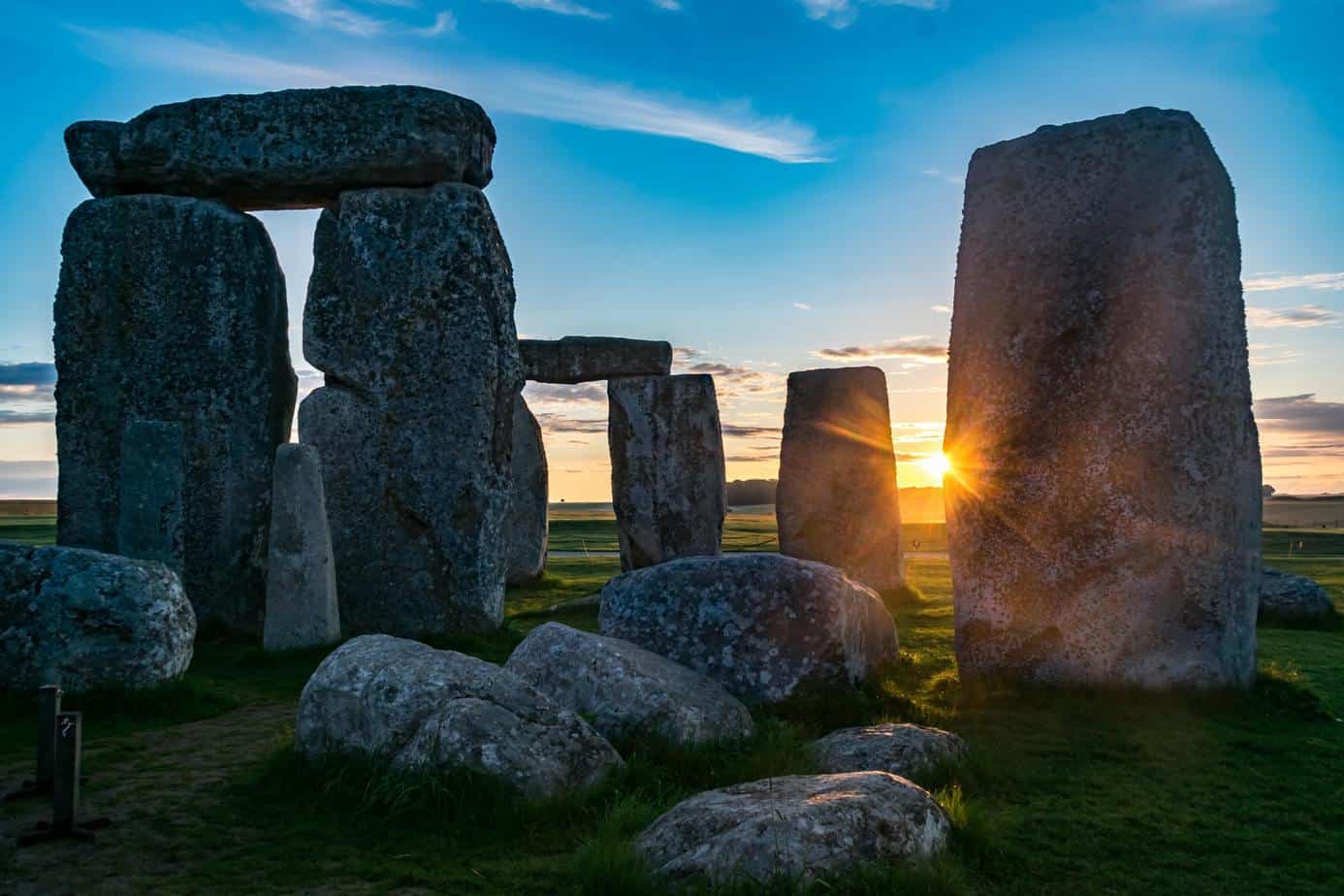
Stonehenge – jone of the most mysterious monuments in the world. It represents a mass of gigantic rock blocks set in a circle in the middle of Salisbury Plain.
Nota bene, excavations at Stonehenge do not cease, the results of which, from time to time, reverberate among scientists and in the media. Recently researchers have discovered Neolithic shafts there, earlier a massive underground circle. The age, as well as the purpose of this complex, is still being pondered.
Medieval scholars literally translated the Old English name Stonehenge, interpreting it as “hanging stones.” Contemporaries give it the meaning of “stone circle”. The second part of the word (“henge”) has passed into archaeological terminology and means a ritual earthen rampart with a moat on the inside.
Stonehenge is located in the English county of Wiltshire, 130 km from London.
Construction of Stonehenge began at the end of the Stone Age by indigenous European tribes. On what is now Salisbury Plain, the builders dug a large circular ditch with an earthen rampart around it. In the moat, archaeologists discovered deer and bull bones, as well as cremated human remains. This circular pit surrounded by a rampart is what archaeologists call a “henge”. Inside it, prehistoric builders dug pits originally filled with vertical stones or vertical wooden beams.
After some time, the construction of a stone monument was undertaken. Five huge trilithons arranged in the shape of a horseshoe were erected in the center of the complex, and an altar of red sandstone was placed in its hollow. Around it, dozens of vertical megaliths were dug in, forming two rings.
The outer ring was made of 30 sarsenes (a very hard variety of sandstone found in England), and the inner ring was made of 80 bluestones of volcanic origin. The weight of the largest boulders exceeds 40 tons. How were the original Britons able to transport such huge multi-ton stone boulders to Stonehenge?
There is a hypothesis, admittedly unconfirmed by geologists, that the boulders were brought by glaciers long before the construction of Stonehenge began. It is generally assumed, however, that the builders used large sledges to transport the stones.
As for where the stones were mined, analysis of their chemical composition has shown that the blue stones came from the Preseli Hills in west Wales, a distance of up to 250 km from Stonehenge. Strontium isotope analysis taken from the teeth of 25 builders buried within Stonehenge showed that at least ten of them were indeed from Wales. The sarsenes, on the other hand, according to the latest research, were extracted from a quarry in the West Woods, located some 30 km from the famous monument.
Scholars have not yet developed one universally accepted vision of why the original Britons built the stone circles.
By the early 19th century, a version of Stonehenge as a druidic temple had become established. Some believed it was the tomb of Buda, the pagan warrior queen of the Celts
In 1995, British astronomer Duncan Steel proposed the hypothesis that Stonehenge had always served astronomical purposes – with the help of stone circles prehistoric people predicted cosmic disasters. However, this hypothesis has not been proven.
It is often claimed that Stonehenge was used for burials. Indeed, in the course of excavations, archaeologists have come across burials, but they date from later centuries.
According to University of Sheffield archaeology professor Mike Parker Pearson, who heads the Stonehenge Riverside Archaeological Project, Stonehenge has served as a burial ground for the people of England since its earliest days and during its heyday in the third millennium BC.
Burial place, astronomical observatory, or perhaps a temple? This question has not yet been resolved by modern science.
Main photo: Ankit Sood/unsplash.com